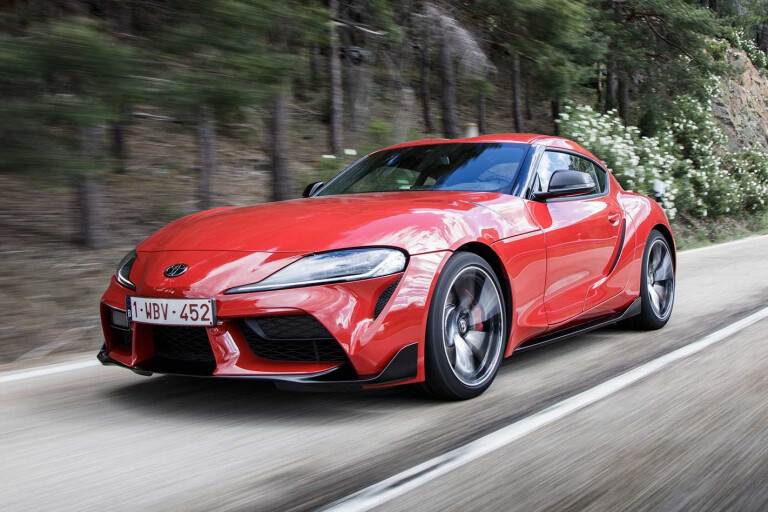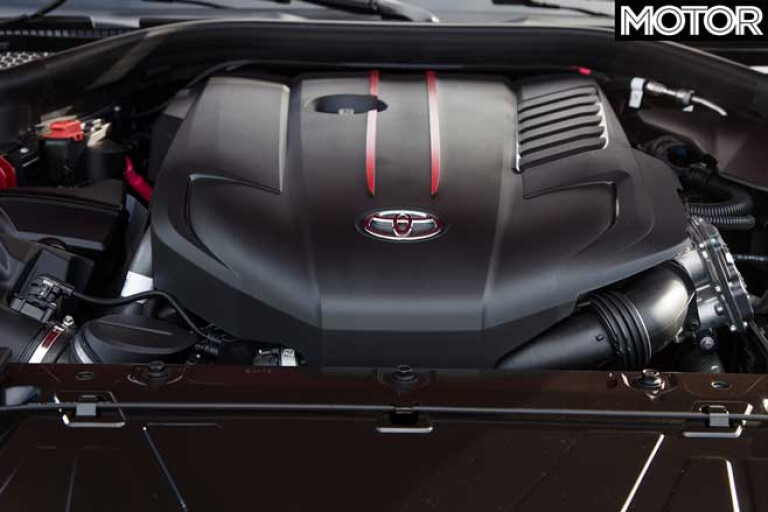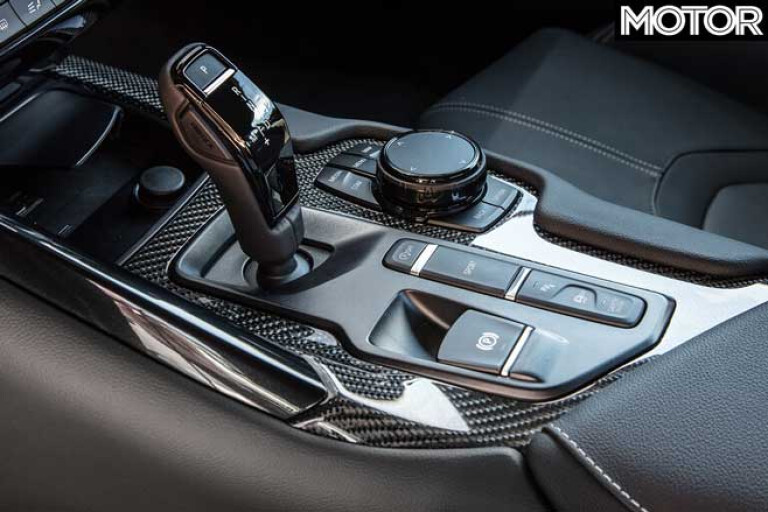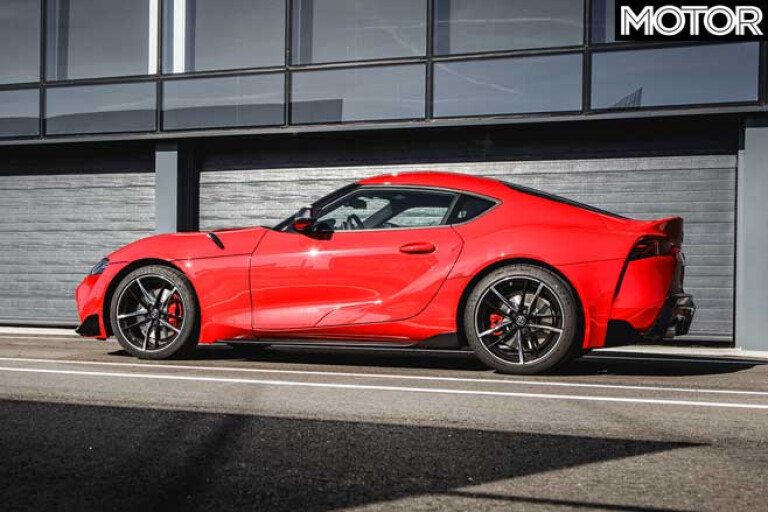
More than anything, this Toyota Supra is remarkable for the fact it exists. The imperative that it make money meant Toyota could not do the car by itself, but the joint venture with BMW that created it and the Z4 has been so fraught that Tetsuya Tada, Supra’s refreshingly honest chief engineer, told me “there were many times when I believed it simply would not happen”.
So you might fear some unsatisfactory compromise between Toyota’s craving for a balls-to-the-wall Porsche Cayman rival and BMW’s no less strong, but more commercially-motivated desire, to build a broadly defined sporting GT.

If so, you’re not alone; Toyota did too. Which is why once the hard points had been agreed – platform, powertrain, wheelbase and so on – the two projects became separate entities, to the extent that Tada-san has driven a Z4 just once and has no idea how his car differs from theirs in terms of settings for suspension, steering and electronically controlled differential. “If you’re going to compare the Supra to another car, compare it to the Cayman,” he said. That’s fighting talk.
It’s an intriguing car even before you’ve fired up BMW’s 250kW twin-scroll, single-turbo straight six. Remember too, it’s the first car developed from scratch by Toyota’s in-house Gazoo Racing high-performance division, hence its full title of Toyota GR Supra.
I think it looks great, save some fussiness around the tail, but the hybrid BMW/Toyota interior takes acclimatisation. I don’t suppose too many Toyota customers will be outraged by the clear and effective iDrive interface, and the bespoke instrument pack is informative and attractive. But the BMW switchgear looks odd in here, at least to me.

For a car with ambitions as a Cayman rival, you might expect to find a manual or double-clutch gearbox, but instead ZF’s ubiquitous 8HP 51 auto directs the power to the rear wheels via a multi-link rear axle. There are struts up front. The driving position is excellent and while the glass house is quite small, visibility is good enough by two-door coupe standards.
The most obvious benefit brought by such a combination of assets is that the Supra is extremely easy to drive, fast or slow. And while that might not be the most exciting of attributes to attach to a once achingly cool nameplate returning after a 17-year lay-off, it matters out there in the real world.
But for the derisory amount of stowage space, this would be an exceptionally easy car with which to live. The engine is smooth at part throttle, the gearbox smoother – even the steering lock is incredibly generous. You’ll like the big boot too.

But actually, you just want to know what it’s like to drive. From the outset the signs are good, perhaps maybe even a little too good. You’ll notice first the ride quality: we’re used to cars like Caymans and Alpines riding well, but to achieve such plush comfort with a more sizeable engine is a different challenge and one to which the Supra rises with ease. It glides down the road in a way you’d be happy to find in a soft-bottomed GT car, let alone one billed to be as sporting as this.
That six-cylinder engine is terrific, too. Not an M Power marvel, true, but certainly far more charming in both voice and power delivery than anything you’ll find in a 718 Cayman. There’s essentially zero lag and the power band is so wide you can deal with almost any decent road in third and fourth alone.

You’ll like the way it handles, too: its steering is quite quick while avoiding the off-centre aggression engineered into some rapid racks to make cars feel more sporting than they really are. Lateral grip from the fat Michelins is impressive, longitudinal grip in the form of traction more impressive still. It’s a very easy car to get into a corner and an even easier one in which to power away from an apex.
So all good, then? Yes, and if this car has an issue, that’s it, right there. There’s goodness here, lots of it, but not so much that you’d readily identify as being truly great. Which in this small but highly select class, is problematic.
Whatever Toyota’s engineers say, the eight-speed auto is not the right transmission for this car. It’s quite quick, but it doesn’t rip through ratios as would the double-clutch ’box it needs. It can seem a little slow to take up downshifts too. Toyota says a DCT was ruled out because of weight, but the Cayman and A110, both lighter cars (the latter considerably so), are so equipped.

But the real reason the Supra falls slightly but significantly short in the all-out sports car role chosen for it by its creators is the way its chassis is configured, and in three key areas.
First there is that suspension softness: standard adaptive damping means the body’s never going to flop about, but there is still too much movement when you start to drive it really hard. The car is always stable but it needs guiding down a great road, where either one of its mid-engined rivals can simply be lobbed. Its body movements need a degree of anticipation and management that theirs do not.
It resists understeer commendably well and will only oversteer on a dry road if provoked, and that’s impressive, but its angle of attack is less throttle sensitive than the mid-engined cars’, lacking as it does their near-balletic, on-the-limit grace.

Secondly, the steering is fine at guiding the car, but less good at filling your fingertips with information about road conditions. Finally, the brake pedal has a slightly dead feel and should you ever take your Supra near a track, the discs will likely need some management if full performance is to be maintained lap after lap.
But none of this is what irks most about this new Supra. It’s the indelible impression it gives that within that sensuous shape a truly great car lies imprisoned. I can almost hear it rattling the bars. My feeling when I drove it was not so much how good a car this is – and don’t let anyone tell you otherwise – but how much better than this it could so easily be.

It doesn’t even need more power. But a six-speed manual gearbox like the one BMW already ties to this engine would be a huge improvement and would shed some kilos, too. Apparently Toyota is considering it.
I hate oversprung cars, but I’d still sacrifice some of that peachy ride quality if it brought a little more composure ‘in extremis’. And a set of big brakes would not go amiss either.
Toyota says that this Supra is just the start of the story. There is already a four-cylinder car on sale in Japan and Tada-san is absolutely not ruling out higher performance versions. I hope he rules them in soon.

To me ‘Supra’ is a special name and it deserves to be attached to very special cars. For all Toyota’s claims that the new Supra has not been compromised by its BMW associations, it feels compromised.
It’s as if Toyota knew exactly how to make this a landmark sports car but pulled back, just a little, right at the last moment. Until it has the courage of its convictions and delivers the car the Supra could so transparently be, impressive though it is in many ways, it will remain a ‘work in progress’.

FAST FACTS
2020 Toyota GR Supra
BODY: 2-door, 2-seat coupe
DRIVE: rear-wheel
ENGINE: 2998cc in-line six, DOHC, 24v, turbocharged
BORE/STROKE: 82.0 x 94.6mm
COMPRESSION: 11.0:1
POWER: 250kW @ 7800rpm
TORQUE: 500Nm @ 1600-4500rpm
WEIGHT: 1495kg
POWER-TO- WEIGHT: 167kW/tonne
TRANSMISSION: 8-speed automatic
SUSPENSION: struts, adaptive dampers, coil springs, anti-roll bar (f); multi-link, adaptive dampers, coil springs, anti-roll bar (r)
L/W/h: 4379/1854/1292mm
WHEELBASE: 2470mm
TRACKS: 1594/1589mm (f/r)
STEERING: electrically assisted rack-and-pinion
BRAKES: 348mm ventilated discs, 4-piston calipers (f); 345mm ventilated discs, single-piston calipers (r)
WHEELS: 19.0 x 9.0-inch (f); 19.0 x 10.0-inch (r)
TYRES: Michelin Pilot Super Sport, 255/35 ZR19 (f); 275/35 ZR19 (r)
PRICE: $84,900-$94,900
ON SALE: September 2019
PROS: Smooth engine; ride quality; looks; interior quality
CONS: Transmission; soft suspension; brakes; too ‘nice’?
RATING: 4 out of 5 stars

COMMENTS